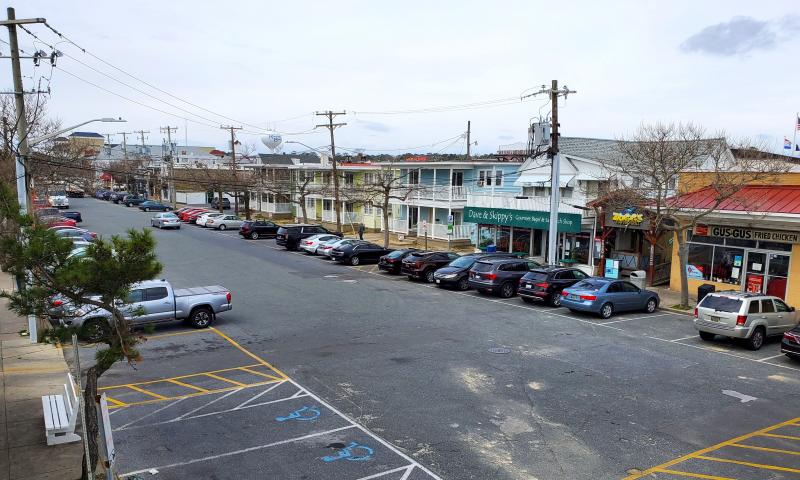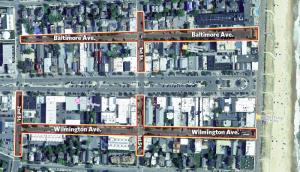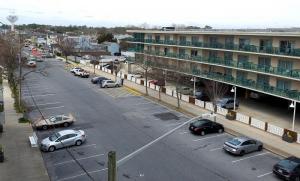Challenges ahead to bury utilities on Baltimore, Wilmington avenues
A task force created to make recommendations on streetscape improvements for Baltimore and Wilmington avenues in Rehoboth Beach met for the first time March 31, and while no decisions have been made, the contractor hired by the city has already recommended not burying the utility lines.
The Wilmington/Baltimore Avenue Streetscape Task Force was created by city commissioners to improve commercial viability, safety, ambiance, and access for pedestrians and bicycles. The area of interest includes the first two blocks of Baltimore and Wilmington avenues, First Street between Baltimore and Wilmington avenues, and Second Street between Wilmington and Rehoboth avenues.
The city has hired the Rossi Group, based in Hunt Valley, Md., to help guide the city through the process to the point of construction. Alexis Morris, a senior planner for the company, participated in the first task force meeting. She said cost, little financial assistance and the inability to completely eliminate all utility poles if desired were the reasons for the company’s recommendation.
Morris estimated it would cost roughly $750,000 per block to bury the lines and, at the very least, there would still be 5G poles.
Mayor Stan Mills didn’t give an opinion, but he did make it clear that burying utilities would mean items currently off the ground – transformers and street lights – would have to be placed at ground level, meaning the sidewalks wouldn’t necessarily be less cluttered. He also said there’s a cost difference in aerial utility maintenance compared to buried utilities, because when there’s a problem with underground utilities, the power company has to excavate to find and fix it instead of being able to observe the problem from the street.
Morris also recommended the city not conduct a traffic study as part of this project. She said under the circumstances, it could be another summer before normal traffic patterns are seen on the city streets, and a study would probably do nothing more than confirm that at peak times, traffic on these streets is higher than would be recommended.
The traffic is high, and there’s not a whole lot that can be done about it, said Morris.
Morris also brought up other items to consider – the creation of one-way streets and limited vehicle-access zones.
Task force members spent the meeting coming up with questions to ask Rossi at a future meeting. Topics included how to possibly incorporate one-way streets without doing a traffic study; how burying utility lines would affect businesses during construction; and whether there is a need for limited-access streets when most of the businesses are not retail.
Morris presented the task force with a time frame that includes a public meeting in September and submission of a final report by November.
Mills said it could be years before there’s any construction. However, he continued, he wants to keep things moving, because he remembers when the Rehoboth Avenue streetscape work got done because another municipality wasn’t ready to move forward on its streetscape project, and DelDOT selected to go ahead with Rehoboth.
The next task force meeting is scheduled for 9 a.m., Wednesday, April 7.

























































